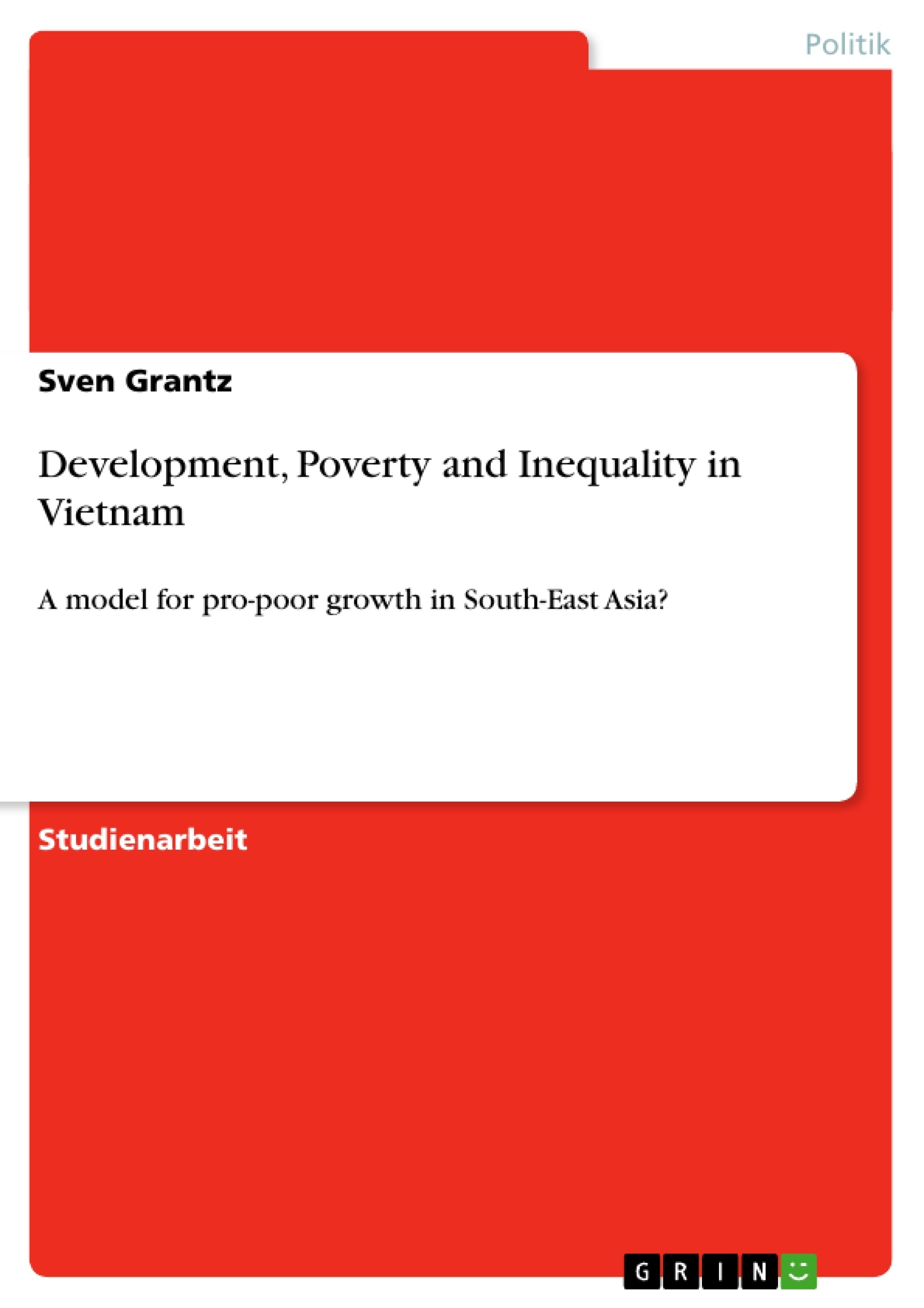The Bertelsmann Foundation states that Vietnam, much like China, shows the tendency of delinking economic development from the transformation towards more democracy. They stress the fact that the responsible elites avoid “political openness” while aiming at swift transformation towards a market economy. Furthermore, they claim that these developments are “symptomatic” for the region and that their economic success makes this style of polity
and politics attractive to others (Bertelsmann Foundation 2008). This typical euro-centrist view of the Asian developing economies has the idea of input-legitimacy at its center. However, the legitimacy of politics and policies in low-income countries is much more dependent on their outcomes in terms of inclusive growth and poverty alleviation. The leading question is therefore: Is Vietnam able to significantly improve the income and consequently,
the well-being of the majority of its population, and can its development be a model for the region?
This paper explores Vietnam’s record of development, poverty reduction and inequality in comparison to its neighbor states. The following part will examine key policies and underlying reforms that were conductive to pro-poor growth in Vietnam as well as remaining challenges.
Inhaltsverzeichnis
- Introduction
- Development record of Vietnam and its neighbor states
- Macro-economic development record
- Human development
- Comparative Analysis of Poverty and Inequality
- Regional Disparities in Vietnam
- Key Issues of inclusive and pro-poor growth
- Reforms for inclusive growth
- Policies for pro-poor growth
- Egalitarian land reform
- Investments in public goods and human capital
- Targeted Aid to the Poor
- Remaining Challenges
- Tackling ethnicity-based and regional inequality
- Improvements in the financial sector
- Private sector development
- Conclusion
- Acronyms
Zielsetzung und Themenschwerpunkte
Diese Arbeit untersucht die Entwicklung Vietnams im Hinblick auf Armutsreduktion und Ungleichheit im Vergleich zu seinen Nachbarstaaten. Sie analysiert die Schlüsselfaktoren, die zum pro-armen Wachstum in Vietnam beigetragen haben, und beleuchtet die verbleibenden Herausforderungen. Die Arbeit befasst sich mit der Frage, ob Vietnam ein Modell für pro-armes Wachstum in Südostasien sein kann.
- Entwicklungsgeschichte Vietnams und seiner Nachbarstaaten
- Vergleichende Analyse von Armut und Ungleichheit
- Schlüsselthemen des inklusiven und pro-armen Wachstums
- Verbleibende Herausforderungen
- Potenzial Vietnams als Modell für pro-armes Wachstum in Südostasien
Zusammenfassung der Kapitel
Das erste Kapitel führt in die Thematik ein und stellt die Forschungsfrage nach dem Potenzial Vietnams als Modell für pro-armes Wachstum in Südostasien. Das zweite Kapitel analysiert die makroökonomische Entwicklung Vietnams und seiner Nachbarstaaten, wobei der Fokus auf dem BIP-Wachstum und der Entwicklung des Einkommens pro Kopf liegt. Das dritte Kapitel vergleicht die Armuts- und Ungleichheitsentwicklung in Vietnam mit seinen Nachbarstaaten und untersucht die regionalen Disparitäten innerhalb Vietnams. Das vierte Kapitel befasst sich mit den Schlüsselfaktoren des inklusiven und pro-armen Wachstums in Vietnam, darunter Reformen für inklusives Wachstum, Politiken für pro-armes Wachstum und verbleibende Herausforderungen.
Schlüsselwörter
Die Schlüsselwörter und Schwerpunktthemen des Textes umfassen pro-armes Wachstum, Entwicklung, Armut, Ungleichheit, Vietnam, Südostasien, makroökonomische Entwicklung, Reformen, Politiken, Herausforderungen, Modell, Vergleich, Nachbarstaaten.
- Citar trabajo
- Sven Grantz (Autor), 2008, Development, Poverty and Inequality in Vietnam, Múnich, GRIN Verlag, https://www.grin.com/document/128124



